Sports
How Many Periods in NHL? (Average Hockey Games Duration)
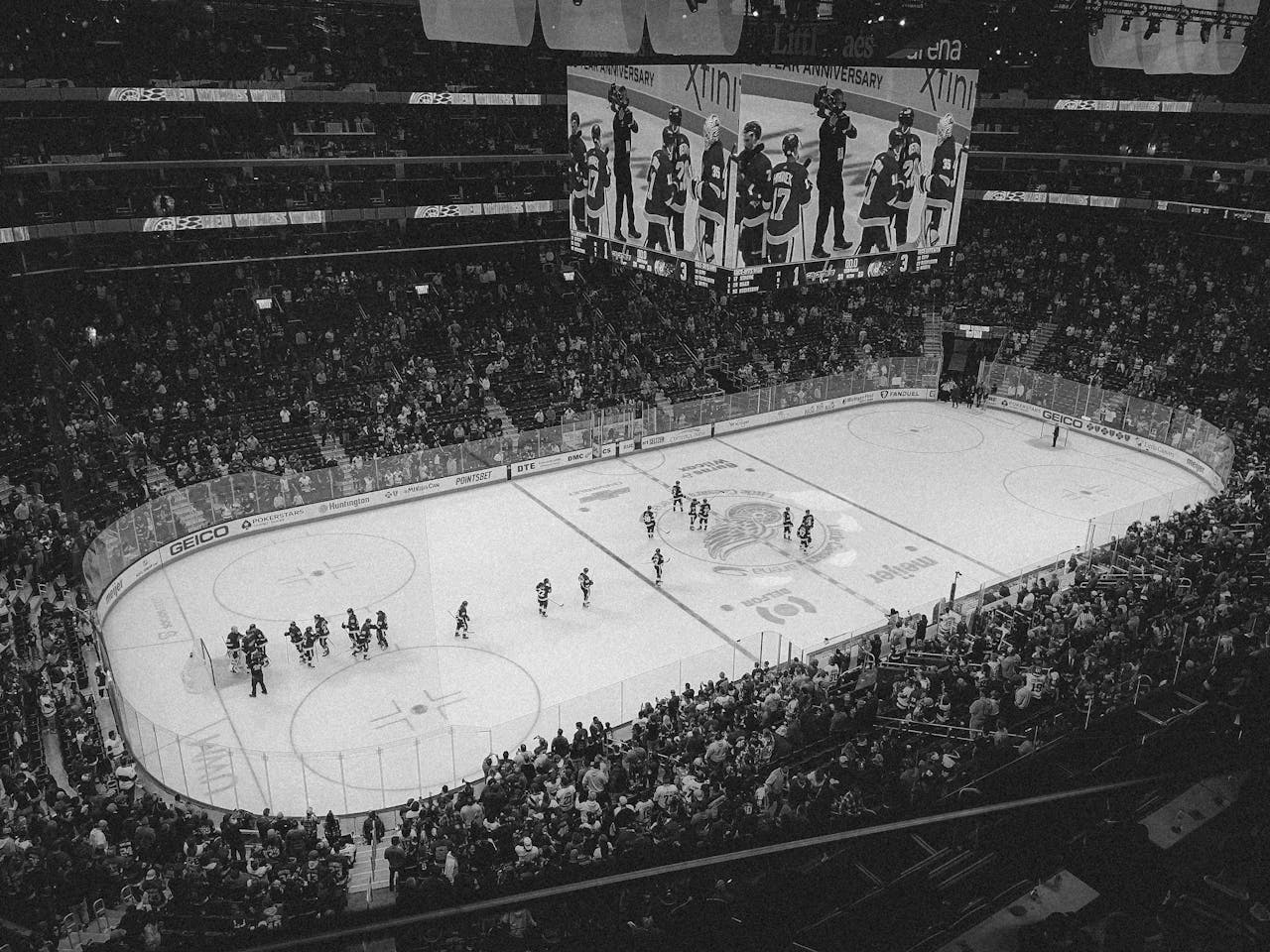
Key Points:
- NHL games have three 20-minute periods, but real game time stretches due to stoppages and intermissions.
- Tied games go to sudden-death overtime short and wild in regular season, full periods during intense playoff showdowns.
- Hockey’s unique structure, fast pace, and dramatic overtime make every game feel like an edge-of-your-seat experience.
Introduction
“Wait, how many periods are there in hockey?” was probably your first question when you watched an NHL game. This is a valid question for people who are used to games such as basketball, which is played in quarters, or soccer, which is played in two halves. Different sets of rules apply to hockey. Once you understand it, its structure makes a lot of sense, which is one of the numerous reasons why everyone enjoys watching this sport.
How many periods are there in an NHL game?
Each NHL (National Hockey League) game has three periods and 20 minutes of real game time. That may seem like a short hour of activity, but it’s not relatively easy.
Stop-time rules are used in hockey, which means that on every whistle sound, time stops: when the puck exits from the ice, when a penalty is called, or when the goalie goes for the save. Therefore, a mere 60 minutes of play is so long that it can easily stretch into 2.5 to 3 hours.
A break occurs in between each of those three phases. These usually run 15 to 18 minutes, which allows the ice crew to resurface the rink (you know, with that giant Zamboni everyone secretly likes watching), coaches to reorganize, and players to recover.
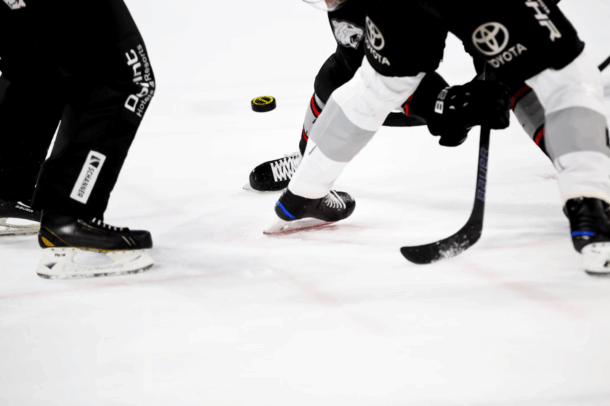
Also Read How Big is a Dimensions & Measurements
Why Are There 3 Periods and Not 2 Halves?
It isn’t easy to imagine a time when hockey was not played in three periods. The early 1900’s was played with two halves of 30 minutes instead of three periods. So, why the change?
The league realized that splitting the game into three parts made way more sense, and here’s why:
- Ice maintenance became easier. Hockey is a fast game, and the ice takes a beating. Because the rink may be resurfaced more frequently throughout two intermissions, there are fewer ruts, less snow accumulation, and improved puck mobility.
- Players got more chances to rest and regroup. With only two halves, fatigue became a real issue. Three periods allowed for shorter, more intense shifts and imaginative play.
- The game became more exciting for fans. More periods mean more faceoffs, restarts, and moments that feel like fresh starts, keeping things exciting even in low-scoring games.
The three-period format stuck, and today, it’s the norm at every level of organized hockey, not just the NHL.
What Happens After the Third Period?
What if the game is tied at the end of the third period? Things start to get spicy at that point.
Regular Season Overtime
A game that ends in a draw during the regular season advances to overtime. This is how it operates:
- It’s a single 5-minute overtime period.
- The players play 3-on-3, excluding goalies, meaning more space, speed, and goal-scoring chances.
- The game is over when one team scores and they have won. It’s sudden death.
If no one scores in overtime, three players from each team take turns attempting to score one-on-one against the goalie in a shootout. After three rounds, if the score is still tied, there will be rounds of sudden-death shootouts until a winner is determined.
Although not everyone enjoys them, shootouts are entertaining and exciting. They’re exciting for fans, but purists sometimes argue they’re not “real hockey.” Still, it’s a fast and decisive way to settle things in the regular season.
Overtime in the Playoffs
Now, this is where it gets intense.
The way ties are handled in the Stanley Cup Playoffs is considerably different:
- They play full 20-minute periods, like in regulation, instead of a shortened overtime.
- Instead of playing 3-on-3, this format is 5-on-5.
- Indeed, there are no shootouts, but it is still sudden death.
If no one scores in the first overtime, they go to a second, then a third, and then a fourth. Double, triple, and even quintuple overtime have been used in several games. It’s stressful for fans and exhausting for players, but it’s incredible, it’s unforgettable.
Also Read: How Long Is A Basketball Game? Basketball Game Duration Explained
How Much Time Does an Actual Time NHL Game Last?
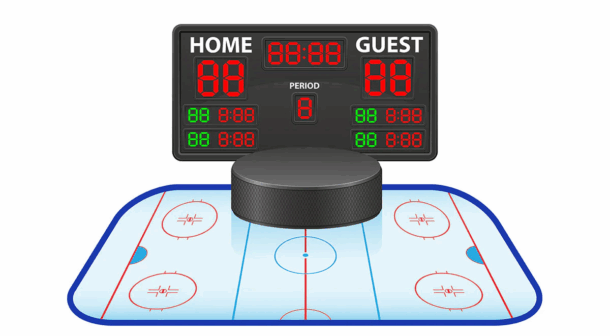
Consider going to an arena or watching a game with buddies. How long will this take?
The quick response is between 2.5 to 3 hours.
Here’s why:
- 60 minutes of game time, divided into three periods of 20 minutes each.
- Two intermissions, about 15–18 minutes each.
- Commercial breaks and TV timeouts, usually 2–3 per period.
- Stoppages in play; for penalties, offsides, icing, goals, and reviews.
- Potential overtime or shootouts, especially if it’s a tight match.
So, while the actual game time is 60 minutes, you’re in for a whole evening of action.
Do Other Leagues Use the Same Format?
Yes, for the most part. Almost all hockey leagues, youth leagues, high school, college, minor leagues, and international play have three periods.
The only real difference will be the length of the break, which can oftentimes differ based on the age group:
- Youth hockey might use 12- or 15-minute periods.
- High school hockey usually has 17-minute periods.
- College hockey (NCAA) mirrors the NHL with 20-minute periods.
But the rhythm stays the same for three periods, with intermissions and all the thrilling momentum shifts that come with them.
Also Read: What Is a Double Double in Basketball?
What Slows Down the Game?
It’s common to feel that a game’s action keeps pausing while you’re watching it. There are several natural breaks in hockey gameplay. These aren’t necessarily bad; they help keep the game fair, organized, and even strategic.
Some common reasons the clock stops:
- The puck leaves the ice (onto the bench or stands).
- Offside or icing is called; these are technical rules that keep the play structured.
- A penalty is assessed, which leads to a player sitting in the box and a power play.
- A goal is scored, which leads to a complete reset.
- A goalie freezes the puck when they catch or cover it to stop play.
- Video review to double-check goals, offside plays, or goaltender interference.
Add TV timeouts (usually three per period), and those 20 minutes on the scoreboard feel much longer. But for fans, these breaks also add drama and anticipation. It’s the perfect time to yell at the TV, talk strategy, or breathe during a tense playoff game.
The Longest NHL Game Ever (You Won’t Believe It)
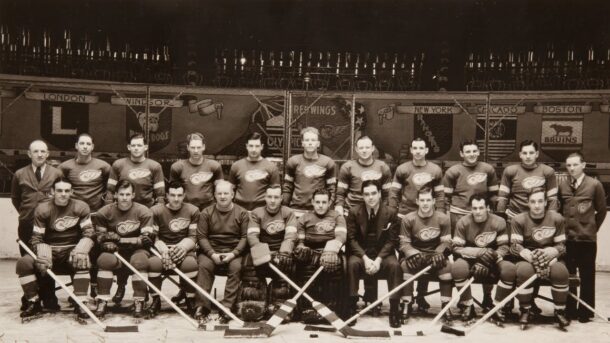
While most games last three hours or less, some have gone into marathon territory. The 1936 postseason series between the Detroit Red Wings and Montreal Maroons was the longest game in NHL history.
The game lasted 176 minutes and 30 seconds of actual playing time, going into six overtimes, yes, SIX! The final goal didn’t come until 2:25 a.m. Talk about dedication.
Even in recent years, there have been some wild ones. Playoff games going into double or triple overtime aren’t that rare. When those happen, players run on pure adrenaline, and fans cling to the edge of their seats or pace the living room with stress.
Conclusion
So, how many periods in the NHL? The answer is simple: three. But once you step into hockey, you’ll see those three periods are just the tip of the iceberg. NHL games offer more than sixty minutes of action thanks to their relentless intensity, astute planning, and possibility of sudden-death overtime.
Knowing how the game is organized makes it way more exciting, whether in the stands, yelling at your screen through the playoffs, or just getting started. Hockey may look like a mess at first, but once you get the flow down, it is one of the most exciting forms of entertainment to watch.
You won’t simply respond, “Three periods,” when someone asks how hockey operates the next time. You’ll say, “Three periods… but trust me, that’s where the fun starts.”
Sports
What Is New In Madden 26: Everything You Need To Know

Okay, it’s that time of the year when we all expect the new Madden NFL game, but the big question is: Is it worth the upgrade, and what are the new features included?
Every year, fans of the long-running series eagerly wait for a new update, but in most cases, games aren’t really that different from the previous generation. Fortunately, in the case of Madden NFL 26, EA Sports didn’t disappoint, at least on paper.
There are many interesting features and updates introduced to the latest game, all designed to make football games more realistic. There have been other minor tweaks and quality of life changes that will make Madden NFL 26 the best football game that you can play right now.
A New Level of Realism in Gameplay
The first thing that you’ll notice with Madden 26, apart from the upgraded visuals and slightly changed interface, is the enhanced realism. As we mentioned before, most of the upgrades in the new game were focused on making the game feel more authentic.
EA Sports has gone all-in on improving the gameplay mechanics, making each match feel more like the real deal. Of course, with every new game, we have slightly changed physics (with Madden 26, they say that they’ve made some big changes), just so the player movement would feel smoother and more natural than ever before.
Then we have the visuals, which, of course, look better than before. There are also some other changes in the AI brain of the game, where quarterbacks now read defenses more intelligently and react to your strategies in real time. Defenders are quicker to recognize pass routes, which means that we have a more dynamic gameplay that forces you to think about your next move, rather than playing randomly.
As you dive into the game, you might find yourself getting more involved in the football world. Perhaps you want to experience playing with the Detroit Lions in the NFC North? You can find more about the Michigan team here: https://www.youbet.com/states/michigan/.
But let’s talk about specific changes and features that will be introduced in Madden NFL 26.
Realistic Gameplay with FieldSENSE 2.0
When we talk about the overall gameplay and the feel of the game, we are talking about the FieldSENSE technology. Knowing EA, they are always giving a certain mechanic a unique name like “FieldSENSE” for marketing purposes, but at the end of the day, it’s just how things work in the game.
They say that the FieldSENSE technology has gone through some big changes. You’ll now have the ability to dictate every move. The game will give you more options and control to tailor the gameplay experience to your style, and this is something we all wanted to hear.
In other words, the new mechanic in Madden 26 will give players more freedom when executing plays, rather than the game feeling overly scripted.
Another standout feature of the new Madden 26 is the Dynamic Player Movement, which gives players more fluid motion, especially during key moments. To put it simply, this is a mechanic and visual combo that dictates how the game feels.
As we mentioned earlier, players now react and move with better control, which improves your overall gameplay experience and makes plays feel more realistic. They’ve also changed the trajectory of the ball coming out of the quarterback’s hands, where you can now choose different types of throws, offering new trajectories based on certain scenarios.
Coach & QB DNA
EA Sports really wanted to make this game more personalized. They’ve introduced a new Coach and QB DNA system, which tailors playcalling to individual coaching styles and quarterback tendencies.
What does this mean? Well, for instance, aggressive coaches like Dan Campbell are more likely to go for it on fourth down, while quarterbacks such as Josh Allen have distinct movement and decision-making patterns.
So, they’ve made matches feel more like the real deal, and this is all good news for the players.
Franchise Mode Overhaul
Of course, Franchise Mode is getting a big upgrade. One of the most significant additions is the revamped Player Career Path, which allows you to take your player to a more detailed journey.
On top of that, players can now choose from four coaching archetypes: Offensive Guru, Defensive Genius, Development Wizard, or a real-life NFL coach. This offers them unique abilities and progression paths down the line.
Then we have the new “wear-and-tear” mechanic, which means player performance can decline over the season based on usage, making careers feel more realistic. There have been some changes in the scouting process, but we have to wait and see how it all turns out.
Superstar Mode: A Cinematic Journey
Superstar mode has evolved into a more narrative-driven experience. New features like Game Day Beats, Sphere of Influence, and Career Chapters create a dynamic storyline where off-field decisions impact on-field performance. Players can navigate media interactions, endorsements, and personal relationships, making each career unique and engaging.
Ultimate Team Enhancements
Madden Ultimate Team (MUT) continues to be a fan favorite, with several improvements this year. The introduction of Pack Helper assists players in evaluating new cards, comparing them to current lineup members, and understanding their market value.
Solo Champions mode offers a 12-game gauntlet each week, providing meaningful progression for solo players. Additionally, crossplay support between PC, PlayStation 5, and Xbox Series X|S enhances the online experience, allowing for a broader competition pool.
Cross-Platform Play
For the first time, Madden NFL 26 supports crossplay across PC, PlayStation 5, and Xbox Series X|S. This feature enables players to compete against each other regardless of their platform, enhancing the online multiplayer experience. However, it’s worth noting that the Nintendo Switch 2 version does not support crossplay.
Presentation and Atmosphere
EA Sports has invested in making each game feel more authentic. Unique pregame elements, real-time jumbotron content, and dynamic commentary shifts based on game situations immerse players in the NFL experience. These enhancements contribute to a more engaging and realistic atmosphere.
Final Words
Are there huge changes that will make Madden NFL 26 feel like a different game? Not really. They’ve focused on quality of life changes, leaning towards a better realism. But we just have to wait for a couple more days to see how the game truly feels.
Sports
Fantasy Meets the Field: How Sports Games Fuel Fan Hype Year-Round

In the world of sports, fan engagement used to be seasonal. You watched the games, read the headlines, maybe bought a jersey or two, and that was that. But in today’s digitally driven and always-connected time, fans are no longer confined to game day. Thanks to the explosive growth of fantasy sports, sports video games, and simulation platforms, the action now continues long after the final whistle.
The line between real-life competition and virtual sports entertainment has blurred, creating a year-round ecosystem where fans are just as invested in stats and strategies as the athletes themselves.
The Rise of Fantasy Sports: Strategy Meets Spectacle
Fantasy sports have become a massive cultural force, transforming casual fans into amateur general managers. Platforms like ESPN Fantasy, Yahoo Sports, and FanDuel, among others, have redefined how people consume and interact with sports. Suddenly, it’s not just about whether your favorite team wins. It has become about how your fantasy lineup performs, how your quarterback stacks up against the competition, and whether your sleeper pick delivers.
What makes fantasy so addictive is the sense of agency. Fans are no longer passive spectators—they’re strategists. Drafting a team, making trades, analyzing matchups, and setting lineups all require a deep understanding of the game. That process fosters a deeper connection to the sport and keeps fans engaged through the off-season as they research rookies, injuries, and depth charts.
For leagues and networks, this is gold. Fantasy sports keep people watching games they wouldn’t otherwise care about, increasing viewership across the board. A random Thursday night matchup between two mid-tier teams suddenly becomes must-see TV if your fantasy playoff hopes depend on a single player’s performance.
Sports Video Games: Immersion and Imagination
Alongside fantasy, sports video games have created another layer of immersive fandom. Franchises like Madden NFL, NBA 2K, FIFA, and MLB The Show don’t just let fans play—they let them live the life of a pro athlete, coach, or general manager. These games have evolved far beyond button-mashing fun, and now include realistic graphics, dynamic storylines, deep franchise modes, and online competitions.
In NBA 2K, for example, you can build a MyCareer player, lead them through college, get drafted, and negotiate endorsement deals which mirror real-life NBA journeys. Meanwhile, Madden lets users take over entire franchises, handle budgets, scout rookies, and build dynasties. It’s not just gaming; it’s a simulation of the sports world itself.
This kind of immersion deepens fan loyalty. Players often develop an emotional attachment to the digital versions of their favorite athletes or the fictional teams they’ve built from scratch. They learn team rosters, playbooks, and even tendencies in such detail that it translates into greater interest in the real-life product.
Simulation Leagues and Digital Fandom
Beyond traditional games and fantasy leagues, sports simulations and AI-driven platforms have begun to find their niche. Websites and communities now run entire simulated seasons using updated rosters and real-world data. Fans can “coach” their AI team, follow box scores, and compete in digital leagues that play out just like the real ones.
These simulations are more than a hobby, they represent a shift in how fans experience sports. Instead of waiting for the next game, simulation leagues offer constant engagement, allowing fans to explore “what if” scenarios, test predictions, and see alternate outcomes. It turns sports into a living narrative, where the offseason becomes as thrilling as the championship itself.
Year-Round Hype: A Marketing Dream
The fantasy leagues, video games, and simulation platforms add up to one major takeaway: sports never stop. Even during the so-called “offseason,” fans are building mock drafts, ranking fantasy prospects, and playing through virtual playoffs. That’s a dream come true for sports leagues, broadcasters, and brands alike.
Fantasy football alone fuels a massive preseason content industry, from rankings and draft kits to podcasts and expert analysis. Similarly, the release of a new Madden or NBA 2K game generates buzz equivalent to a major playoff series. These cultural moments stretch the sports calendar and provide endless touchpoints for engagement.
Social media has only amplified this dynamic. Players post their video game ratings, fans argue over fantasy rankings, and influencers stream games with live commentary. It’s a 360-degree experience that weaves together the physical and digital worlds of sports in a way that was unimaginable just two decades ago.
From Fan to Player: The Evolution of Engagement
Whether they’re managing a fantasy team, playing in an online tournament, or running a simulated league, they’re involved in the outcome. That investment fosters loyalty, fuels debate, and builds community.
As fans take a more active role in how they experience sports—through betting, daily fantasy, and strategy-driven games—they’re looking for smarter ways to stay ahead. That’s where FanDuel Research and similar platforms come in. They offer the latest sports betting and DFS news to help fans track trends, make informed decisions, and stay connected to the action in a whole new way.
This type of fan engagement also nurtures the next generation of sports enthusiasts. Kids who grow up playing FIFA may develop a lifelong love for soccer. Someone who dominates their fantasy basketball league might end up following the NBA more closely than they ever thought possible. It creates multiple entry points into the sports world and keeps people connected year-round.
Final Words
As technology continues to evolve, the convergence of fantasy and reality will only get stronger. Augmented reality, deeper data analytics, and more immersive gaming experiences are on the horizon. The sports experience is no longer limited to the stadium or the screen—it’s in your hands, on your phone, and embedded in your daily routine.
Fantasy sports and video games aren’t distractions from real-life athletics—they’re extensions of them. They enhance the fan experience, deepen loyalty, and create a never-ending loop of hype and engagement.
Sports
Unpacking Sports Harmonicode: What It Is, How It Works, and Why It Matters

In today’s data-driven world of athletics, where even milliseconds and micro-movements can determine the outcome of a game, innovation in training methods has become essential. One such innovation gaining attention is Sports Harmonicode—a cutting-edge concept that blends biomechanics, rhythm, data science, and wearable technology. Designed to decode the harmony of human motion, Sports Harmonicode offers a new way to understand, optimize, and elevate athletic performance. Whether you’re a coach, athlete, or performance specialist, understanding this concept may change how you approach training and recovery.
What is Harmonicode Sport?

Harmonicode Sport refers to a performance optimization model based on identifying and enhancing the harmonic patterns in athletic movement. Think of it as discovering the natural rhythm within each action—running, jumping, swinging—and aligning training to support that rhythm. It combines principles of harmony (balance, timing, coordination) and code (structured data, algorithms, patterns) to produce a more efficient, sustainable, and high-performing athletic experience. In this context, athletes don’t just move—they move in sync with their optimal biomechanical frequency.
The Science Behind Harmonicode Sport
At the core of Harmonicode Sport is the idea that every athlete has a unique rhythmic blueprint. Just like in music where harmony improves sound, harmonic movement in sports enhances efficiency and reduces strain. Neurological research supports that repetitive, well-timed motion strengthens neural pathways, improves proprioception, and reduces energy waste. Harmonicode identifies these patterns using sensor data and models, then aligns training to refine or restore this rhythm, improving the athlete’s overall movement economy.
Also Read: Top 10 Tallest Football Player: A Record-Breaking Athlete
The Importance of Frequency and Resonance
In physics, every object has a natural frequency at which it vibrates. Human bodies, too, have natural frequencies depending on their structure, posture, and function. When athletes perform at their resonant frequency, their movements require less energy and cause less strain. Harmonicode Sport focuses on finding this frequency across different sports and body types, then helping athletes train at their optimal “resonant zones.” The result is smoother, more powerful, and sustainable performance with minimized risk of injury.
Biomechanics and Athletic Movement
Biomechanics is a key pillar of Harmonicode Sport. The concept begins by analyzing joint angles, muscle firing sequences, and ground reaction forces. These data points help generate a map of how an athlete moves in real-time. By identifying where motion is out of sync or inefficient—known as “disharmonic points”—trainers can apply corrective drills to restore balance. Whether it’s adjusting a sprinter’s stride length or refining a golfer’s swing arc, Harmonicode refines the physical mechanics in harmony with nature’s design.
Technology Integration in Harmonicode Sport

Wearable Tech and Smart Sensors
Modern Harmonicode training uses wearable sensors to collect motion data in real-time. These include gyroscopes, accelerometers, and EMG sensors that monitor muscle activity, rotation, and posture. Worn on joints, shoes, or clothing, these devices feed live data to coaches and AI tools, allowing for instant correction and precision tracking of progress. This kind of tech is making high-performance analytics more accessible even outside elite sports labs.
Data-Driven Software Tools
Raw data from sensors is only useful when properly analyzed. Harmonicode platforms rely on advanced software dashboards to visualize performance patterns, compare movement across sessions, and provide AI-backed recommendations. These tools help trainers spot emerging imbalances, fatigue indicators, and rhythm shifts that could lead to injury or declining performance. Many systems also integrate machine learning to adjust personalized training plans as the athlete evolves.
Also Read: The Best Video Game Sports Franchises of All-Time
Key Applications of Sports Harmonicode

Harmonicode Sport is used across disciplines—from track and field to team sports, and even rehabilitation. In training, it helps fine-tune movement, improve coordination, and build muscle memory through rhythmic drills. In rehab, it’s used to restore an athlete’s natural movement frequency after injury, ensuring a smoother and safer return. It’s also emerging in sports analytics, offering coaches a deeper view of real-time biomechanics, especially during high-stakes competitions.
Key Benefits of Harmonicode Sport
The benefits of adopting a Harmonicode-driven approach are substantial. Athletes experience greater precision and control, as movement becomes more predictable and aligned with their unique rhythm. There’s also reduced energy waste, meaning athletes can perform longer and recover faster. Since harmonic training focuses on postural alignment and neuromuscular balance, the chances of chronic or impact-related injuries drop significantly. For coaches, it’s a goldmine of actionable insights that go beyond basic stats and into the DNA of performance.
Future Trends in Harmonicode Sport
The future of Harmonicode Sport lies in AI-assisted coaching, where personalized recommendations are generated in real-time. As sensors get smaller and more powerful, we may see wearables embedded in clothing, delivering live biomechanical feedback. VR and AR integration are also on the horizon, allowing athletes to train in immersive environments where rhythm and balance are guided by visual cues. This tech evolution may soon make Harmonicode the foundation of elite sports science and everyday fitness.
Who Should Use Harmonicode Sport?

While it originated in the high-performance athletic space, Harmonicode Sport is now being adapted for broader audiences. Elite athletes can use it to break performance plateaus. Coaches benefit from precision diagnostics and real-time correction tools. Physical therapists apply it to injury prevention and recovery protocols. Even fitness enthusiasts or aging adults can use simplified harmonic routines to improve balance, flexibility, and coordination in daily life.
Comparisons with Traditional Sports Training
Traditional sports training often focuses on reps, speed, and volume. Harmonicode takes a more strategic and data-centric approach—prioritizing quality of motion over quantity. Instead of pushing harder, it focuses on moving smarter. Where traditional drills may ignore imbalance or asymmetry, Harmonicode catches them early. It’s a proactive, predictive model rather than reactive, which means fewer injuries and more consistent progress over time.
Criticisms or Limitations
Despite its promise, Harmonicode Sport is still relatively new and evolving. Some critics argue that it lacks long-term studies and broad peer-reviewed evidence. The tech involved may also be expensive or complex for small teams or casual athletes. Additionally, there’s a learning curve—coaches and users must be comfortable with data, sensors, and software platforms to make full use of the system. However, as adoption grows and costs drop, these limitations are likely to fade.
FAQs
Is Harmonicode Sport backed by science?
Yes, it’s based on principles of biomechanics, neuroscience, and rhythm theory, though more research is emerging.
Do I need special equipment to get started?
Basic harmonic drills can be done without tech, but wearables and software greatly enhance precision and results.
Can beginners benefit, or is it only for pros?
Absolutely—simple harmonic drills improve balance, focus, and posture for users at any fitness level.
How does it compare to motion capture tech?
Motion capture is typically used in labs and post-analysis, while Harmonicode offers real-time insights and corrections.
Final Thoughts
Sports Harmonicode represents a powerful shift in how we approach athletic performance. By aligning movement with rhythm, frequency, and balance, it enables athletes to train not just harder, but in harmony with their natural mechanics. As technology evolves and more research supports its effectiveness, Harmonicode Sport could become a staple in elite sports science and accessible wellness alike. Whether you’re chasing gold medals or better mobility, understanding your harmonic code might just be the breakthrough you’ve been waiting for.
-

 Guides6 years ago
Guides6 years ago6 Proven Ways to Get more Instagram Likes on your Business Account
-
Mainstream11 years ago
BioWare: Mass Effect 4 to Benefit From Dropping Last-Gen, Will Not Share Template With Dragon Age: Inquisition
-

 Mainstream7 years ago
Mainstream7 years agoHow to Buy Property & Safe Houses in GTA 5 (Grand Theft Auto 5)
-

 Guides1 year ago
Guides1 year agoFree Fire vs PUBG: Comparing Graphics, Gameplay, and More
-

 Casual2 years ago
Casual2 years ago8 Ways to Fix Over-Extrusion and Under-Extrusion in 3D Printing
-

 Guides10 months ago
Guides10 months ago50+ Free Fire ID and Passwords Login List (Giveaway) 2025
-
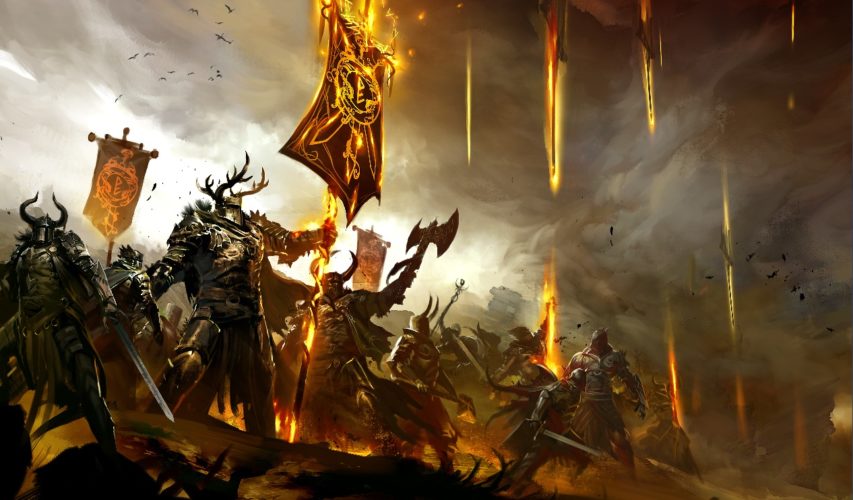
 Mainstream13 years ago
Mainstream13 years agoGuild Wars 2: The eSports Dream and the sPvP Tragedy
-

 Other2 years ago
Other2 years agoAjjubhai UID: Free Fire Details & Earnings
